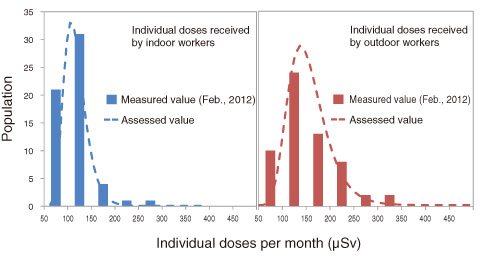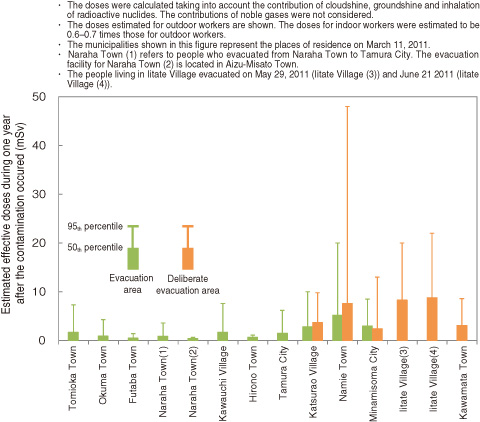
Fig.1-20 Comparisons of measured and assessed values of individual doses

Fig.1-21 Estimated effective doses during one year after contamination occurred
The accident at the TEPCO’s Fukushima Daiichi NPS resulted in widespread land contamination. Many residents are exposed to radiation in their daily lives while they continue to live in the affected areas. To manage the exposure of the population appropriately, the development of a dose assessment method is urgently required.
The doses received by the population in daily life are generally assessed using (1) data on the radionuclide concentrations or exposure rates and (2) data on lifestyle habits related to exposure pathways. If the average values of these data were used, it would be difficult to determine individual doses. Thus, we developed a method of assessing the dose distributions of a population living in the same area.
To develop the model, we measured the ambient dose equivalent rates and prepared data on lifestyle habits, which were obtained from surveys on the periods of time spent inside and outside, with the cooperation of participants in various types of occupations. After we determined the distributions of the ambient dose equivalent rates and the lifestyle data, we assessed the distributions of doses received by the population. We also measured data on individual doses due to external exposure with personal dosimeters. The validity of the assessment was confirmed by comparing the results of the assessment and the measured data (Fig.1-20).
In addition, we assessed the range of doses received by the evacuees during one year after the accident using the method developed above. This assessment takes into account the doses received during evacuations to multiple facilities and the evacuees’ lives after that. Fig.1-21 shows the result of the dose assessment for outdoor workers. In most of the municipalities included in the evacuated areas, the range of effective doses is 1-10 mSv for outdoor workers during one year after the accident. In Namie Town and Iitate Village, where evacuation was delayed after contamination occurred, the effective doses were higher than in other municipalities: 4.9-48 mSv and 5.2-22 mSv, respectively. Our study provides ranges of doses that are more detailed than the results published by the World Health Organization and are based on scientific grounds by taking into account areal differences in contamination and individual differences in lifestyle habits.